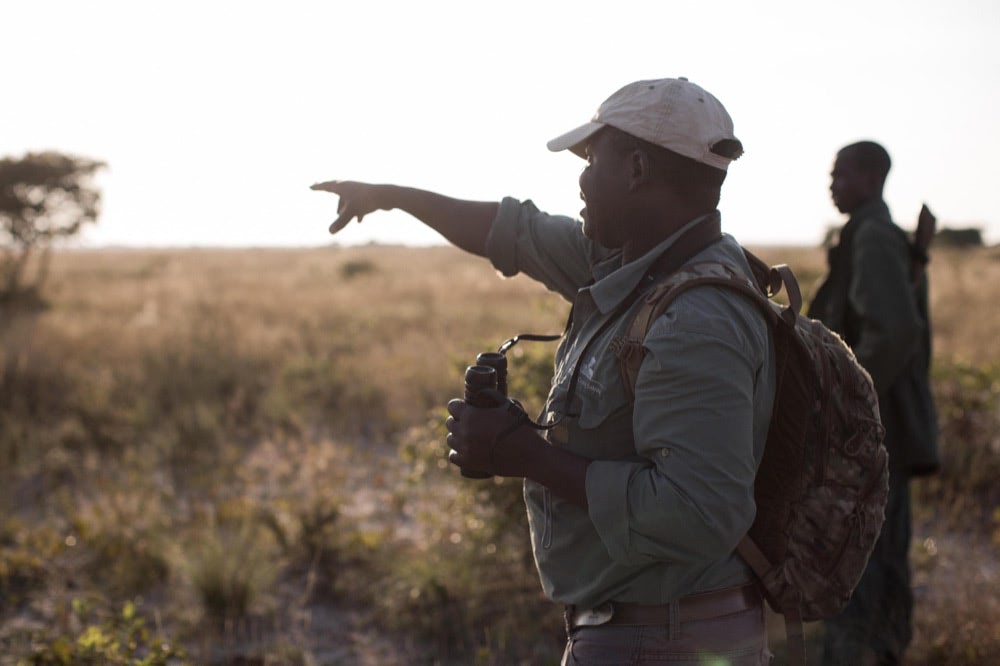It was the King of Barotseland, Lubosi Lewanika, who first charged his people with the custodianship of the park and its wildlife in the 1800s. These were the sacred and abundant hunting lands of the royal dynasty and their tribe, and King Lewanika saw their fragility and linked their continued vitality to that of his people. This was utterly extraordinary in its time and, though there have been plenty of wobbles on the journey, the sentiment is the very soul of this national park today.
This is a place of inclusion. 10,000 people live within the park making their living with a finely-honed mix of the traditional and the modern in their farming, cattle rearing and fishing methods. This holistic characteristic is reflected in the park’s management with the non-profit organisation Africa Parks taking over the leadership and rehabilitation of the protected area in partnership with Zambia’s Department of National Parks and Wildlife and the Borotse Royal establishment. The accomplishments of this accord are astonishing and testament to the vital role of local communities in the preservation of wilderness areas.

Liuwa is also a land of absurd flatness, where one can walk out alone to consider one’s smallness while observing 360° of retreating horizon. Take a moment beneath limitless African skies and discover the overwhelming joy and simultaneous trepidation caused by watching the approaching weather. Soaring above and dotting the landscape of this vast plain are flocks of our feathered friends.
Birdwatching may not seem like the most animated of adventures, but we promise that in Liuwa, even the most hardened critics will enjoy the spectacle. The floodplain is freckled with flat pans and channels, brimming with lilies, fish, insects, amphibians and all sorts of other delicious goodies, as the flood waters recede and emerald turns to gold on the surface. These pans become awash with avian life. Grey Crowned and Wattled Cranes; large, ornate and endangered; can been seen in flocks of up to a hundred here, feeding in the grass. Their expansive wings get them airborne with a little fuss and they make startling silhouettes across the dusk skyline, heading in search of trees to roost.
Thousands of African Skimmers rest on the ground by the pans before taking to the skies in a swarm of excitement, like schools of fish in the air. Circling back as if squadrons in formation, they demonstrate the purpose of their strange, red hot poker underbite. Submerging the lower mandible beneath the mirror flat surface, they skim the water at astonishing speed ready to snap the bill shut at the touch of an unsuspecting fish. The skimmers share a sky, crowded with feathers. Whiskered and White-Winged Turns, barrel and swing with beautiful unity when rebuffed by some aerial barrier not visible to us. All are joined by over 100,000 Black Winged Pratincole that migrate here from Europe and Asia in November.
How do you like your storks folks? Open-Billed, Saddle-Billed, Yellow-Billed – whatever you can conjure in your mind, we have covered here in droves. Goliath Herons (they are massive, it’s not just a clever name) rasp their morning call, Slaty Egrets are seen on mass, sacred Ibis give way to Great White and Pink Backed Pelicans on the channel, followed closely by African Spoonbills and Black-Smith Lapwings. The relative harmony turns to discordant chaos at the menacing shadows of Bateleur Eagles and Marsh Harriers. It is captivating in its pandemonium. This is one of the things we love most about Liuwa - the way it draws you in to all the alternative fascinations that are so often overlooked in more archetypal safari destinations.
In keeping with the atypical vibe, Liuwa is host to what one might call the ‘other man’s wildebeest migration’, second only to the great herds of the Serengeti-Mara ecosystem in East Africa. Though the numbers in Liuwa are significantly fewer, we are still talking about some 35,000 wildebeest accompanied by 4000 zebra, that shift from the woodlands to gather in huge numbers on the floodplains at the beginning of the rainy season. It offers up all the spectacular visuals of the gatherings on the southern plains of the Serengeti but is almost entirely unnoticed by mainstream tourism. You get it all to yourself.
Liuwa is no slouch when it comes to predators either, but again with a distinctive, offbeat flavour. Spotted Hyaenas dominate the ecosystem with some 350 of them forming large clans and denning within the park. You have the wonderful opportunity to observe these unusual and complex creatures in fine detail here, often with insights and stories from the field researchers working for the Zambia Carnivore Program, who monitor many of the den sites.
Cheetah populations are blooming, and the Park is also home to some large packs of the highly endangered African Wild Dog. Both species make for a rare and special sighting on any safari. But certainly the most astonishing story of Liuwa Plain belongs to the lions, or to be more precise, to one lone lioness called Lady Liuwa, the sole surviving member of a lion population devastated by poaching and habitat encroachment. She became an icon of resilience and hope for a species and a park on the very brink of survival. She was perhaps the symbol that inspired the will and provided the momentum for the rebirth of this protected area under African Parks Foundation and in doing so, by the time she died at the ripe old age of 17 years (highly unusual for a lioness) she had witnessed the return of her own kind to the plains for which she was named.
Liuwa is full of secrets and wonders for those brave enough to head off the beaten track. Lilly pads beneath thunderous skies. The joy of solitude in the great expanse of Africa. The whooping of hyaena clans hassling the herds and the moaning song of long absent lions returned to their land. Stories to tingle your spine at a campfire beneath nothing but the stars.
